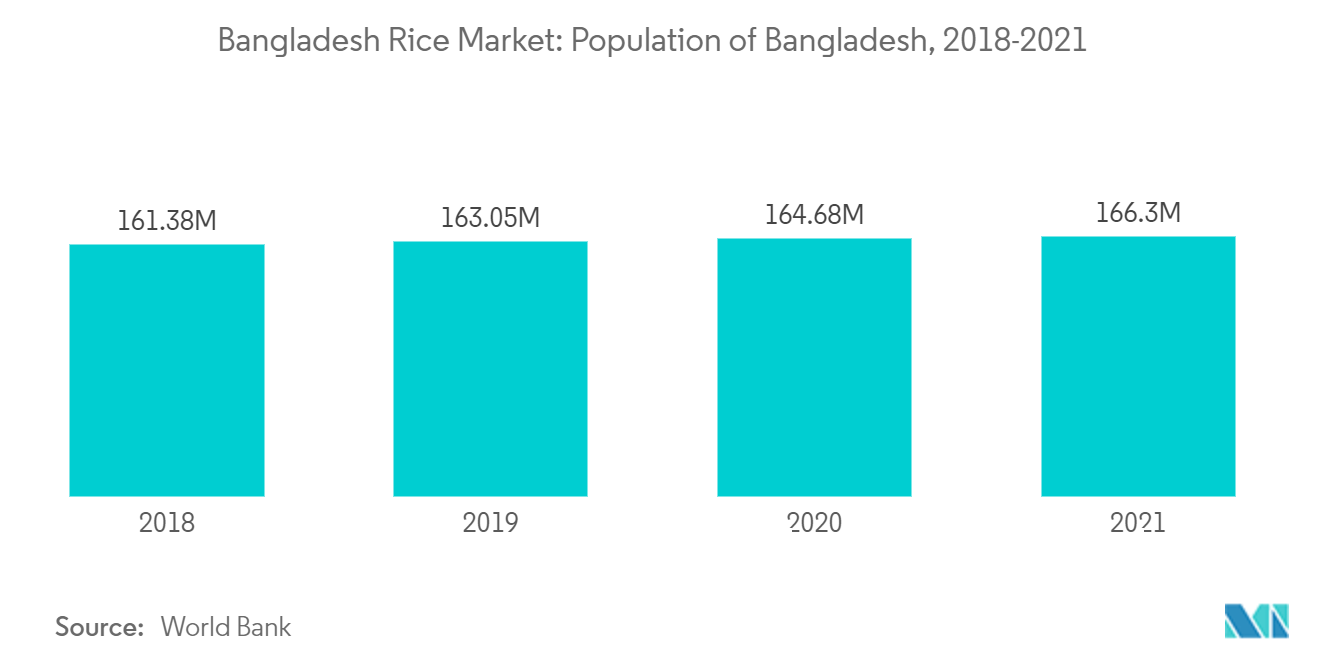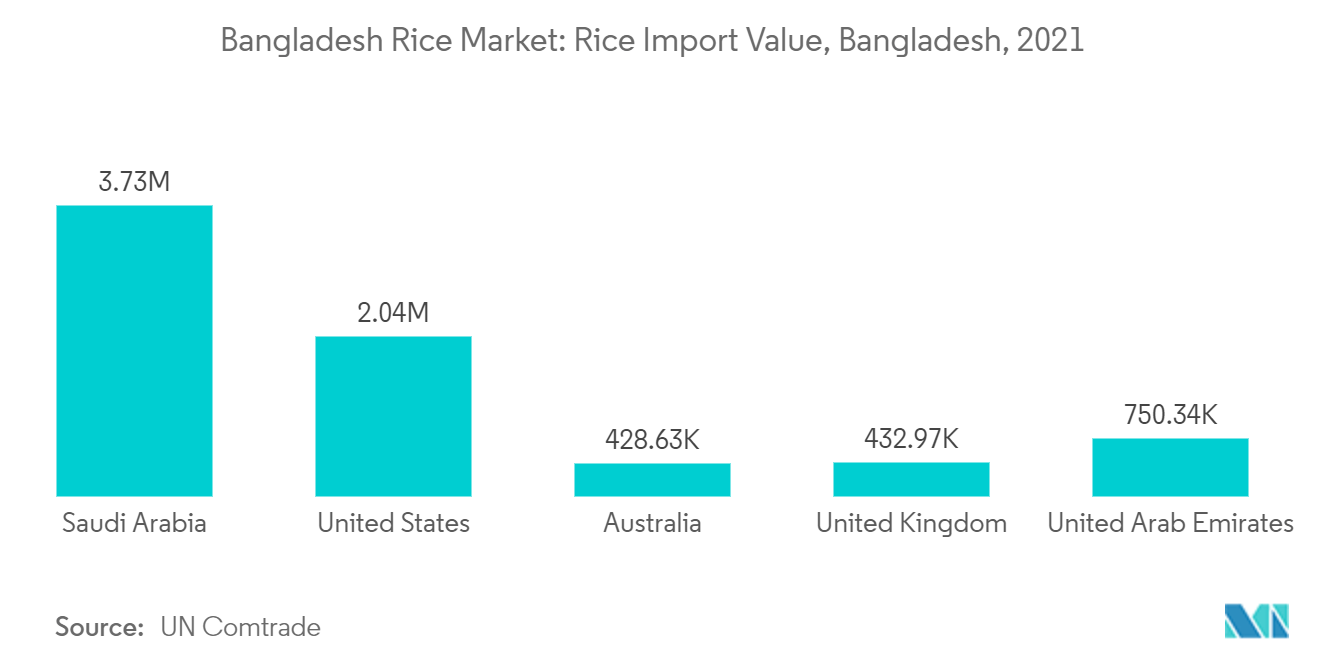Market Trends of Bangladesh Rice Industry
This section covers the major market trends shaping the Bangladesh Rice Market according to our research experts:
Growing Population and Increase in Disposable Income
- Rice is a staple food in Bangladesh in many houses. People consume rice on a daily basis in their homes. According to United States Department of Agriculture (USDA) data from 2021, Bangladesh produced 34,600 (1000 MT) of rice in 2021. The rice market is growing in the region with an increase in disposable income and the population.
- A variety of rice like Chinogura rice, Kataribhog Rice, Paijam Rice, Najirshail Rice, and many more are available in the market. In the low-lying marshlands of Bangladesh, Boro is the most important and preferred variety of crop in the region.
- The increasing population and income sources also increase the price of rice in the local market. Furthermore, suppose the supply of fertilizers from the Ministry of Agriculture (MOA) and the Department of Agriculture Extension (DAE) is continued. In that case, domestic rice demand is expected to be higher over the medium term.

Regular Rice Dominates The Market
- Bangladesh's rice market is operated by both government and private sector players. The government is bringing various policies and interventions to achieve self-sufficiency. Regular price occupies the major share in the Bangladesh rice market since aromatic rice is costly and is mainly preferred by the higher economic class.
- Under the Public Food-Grain Distribution System, the government distributes rice both through monetized channels (like the Open Market Sales Program) and through nonmonetized (targeted) channels (such as FoodforWork, the Vulnerable Groups Development Program, and several smaller programs). Local varieties, such as Kataribhog, Kataktara, Bashful, Bau-pagal, and Nizershail, are preferred for regular consumption.
- The market players also use broken rice to prepare animal feed in the region. Government initiatives are also driving the market for better growth. For example, the Ministry of Agriculture (MOA) has also allocated USD 37.64 million over the 2021-2025 time period for the distribution of 52,000 units of farm equipment to support the development of modern agriculture practices.


